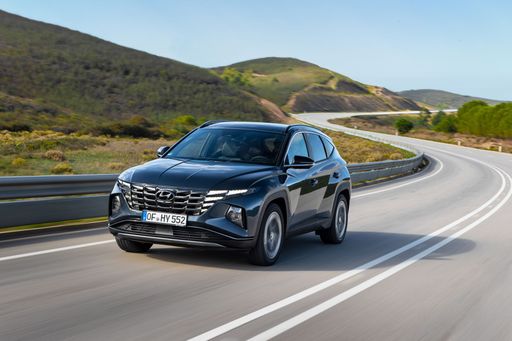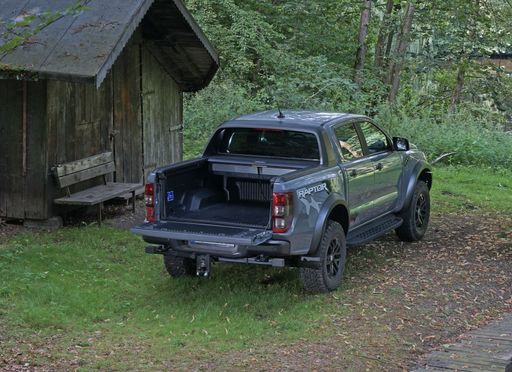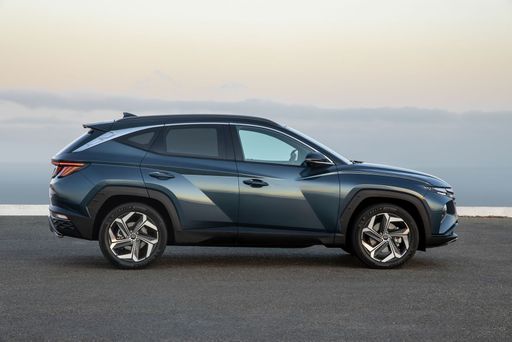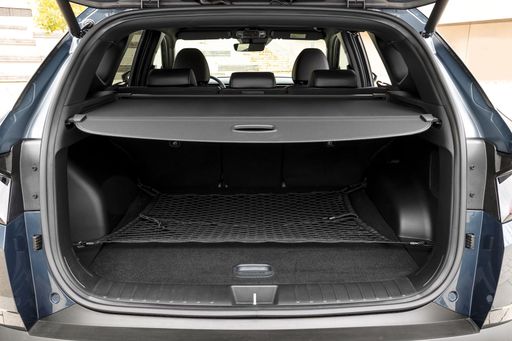Ford Ranger vs Hyundai Tucson – Which one offers the better deal?
Everyday use, family trips or long-distance drives – here’s where the differences show.
Discover whether Ford Ranger or Hyundai Tucson fits your lifestyle better.
Costs and Efficiency:
Looking at overall running costs, both models reveal some interesting differences in everyday economy.
Hyundai Tucson has a clearly perceptible advantage in terms of price – it starts at 30600 £, while the Ford Ranger costs 37500 £. That’s a price difference of around 6891 £.
Fuel consumption also shows a difference: Hyundai Tucson manages with 1 L and is therefore clearly more efficient than the Ford Ranger with 3.10 L. The difference is about 2.10 L per 100 km.
As for range, the Hyundai Tucson performs distinct better – achieving up to 70 km, about 28 km more than the Ford Ranger.
Engine and Performance:
Under the bonnet, it becomes clear which model is tuned for sportiness and which one takes the lead when you hit the accelerator.
When it comes to engine power, the Ford Ranger has a somewhat edge – offering 292 HP compared to 252 HP. That’s roughly 40 HP more horsepower.
Both models accelerate almost equally fast – 7.90 s from 0 to 100 km/h.
In terms of top speed, the Hyundai Tucson performs minimal better – reaching 194 km/h, while the Ford Ranger tops out at 190 km/h. The difference is around 4 km/h.
There’s also a difference in torque: Ford Ranger pulls convincingly stronger with 697 Nm compared to 367 Nm. That’s about 330 Nm difference.
Space and Everyday Use:
Cabin size, boot volume and payload all play a role in everyday practicality. Here, comfort and flexibility make the difference.
Both vehicles offer seating for 5 people.
In curb weight, Hyundai Tucson is clearly perceptible lighter – 1520 kg compared to 2082 kg. The difference is around 562 kg.
When it comes to payload, Ford Ranger decisively takes the win – 1108 kg compared to 545 kg. That’s a difference of about 563 kg.
Who wins the race?
The Hyundai Tucson proves to be is largely superior and therefore becomes our DriveDuel Champion!
Hyundai Tucson is the better all-rounder in this comparison.

Hyundai Tucson
Ford Ranger
The Ford Ranger stands out in the pickup market with its robust build and versatile capabilities, making it a popular choice for both work and leisure. Its modern design is complemented by a well-equipped interior, providing comfort and advanced technology. Whether tackling challenging terrains or cruising through the city, the Ranger delivers a reliable and dynamic driving experience.
details @ media.ford.com
@ media.ford.com
 @ media.ford.com
@ media.ford.com
Hyundai Tucson
The Hyundai Tucson is a standout choice in the compact SUV segment, offering a perfect blend of style, comfort, and practicality. Its modern design is complemented by a spacious interior that provides ample room for passengers and luggage alike. With advanced technology and safety features, the Tucson ensures a smooth and enjoyable driving experience.
details @ hyundai.news
@ hyundai.news
 @ hyundai.news
@ hyundai.news
 @ hyundai.news
@ hyundai.news
 @ hyundai.news
@ hyundai.news
 @ hyundai.news
@ hyundai.news

|

|
|
|
|
Costs and Consumption |
|
|---|---|
|
Price
37500 - 71900 £
|
Price
30600 - 46300 £
|
|
Consumption L/100km
3.1 - 13.8 L
|
Consumption L/100km
1 - 6.9 L
|
|
Consumption kWh/100km
-
|
Consumption kWh/100km
-
|
|
Electric Range
42 km
|
Electric Range
64 - 70 km
|
|
Battery Capacity
11.80 kWh
|
Battery Capacity
-
|
|
co2
70 - 315 g/km
|
co2
22 - 156 g/km
|
|
Fuel tank capacity
80 L
|
Fuel tank capacity
42 - 54 L
|
Dimensions and Body |
|
|---|---|
|
Body Type
Pickup
|
Body Type
SUV
|
|
Seats
2 - 5
|
Seats
5
|
|
Doors
2 - 4
|
Doors
5
|
|
Curb weight
2082 - 2511 kg
|
Curb weight
1520 - 1889 kg
|
|
Trunk capacity
-
|
Trunk capacity
546 - 620 L
|
|
Length
5370 - 5420 mm
|
Length
4510 - 4520 mm
|
|
Width
1918 - 1968 mm
|
Width
1865 mm
|
|
Height
1868 - 1922 mm
|
Height
1650 mm
|
|
Max trunk capacity
-
|
Max trunk capacity
1721 - 1799 L
|
|
Payload
676 - 1108 kg
|
Payload
525 - 545 kg
|
Engine and Performance |
|
|---|---|
|
Engine Type
Diesel, Petrol, Plugin Hybrid
|
Engine Type
Diesel MHEV, Petrol MHEV, Petrol, Full Hybrid, Plugin Hybrid
|
|
Transmission
Manuel, Automatic
|
Transmission
Automatic, Manuel
|
|
Transmission Detail
Manual Gearbox, Automatic Gearbox
|
Transmission Detail
Dual-Clutch Automatic, Manual Gearbox, Automatic Gearbox
|
|
Drive Type
All-Wheel Drive
|
Drive Type
Front-Wheel Drive, All-Wheel Drive
|
|
Power HP
170 - 292 HP
|
Power HP
136 - 252 HP
|
|
Acceleration 0-100km/h
7.9 - 12.1 s
|
Acceleration 0-100km/h
7.9 - 11.6 s
|
|
Max Speed
180 - 190 km/h
|
Max Speed
180 - 194 km/h
|
|
Torque
405 - 697 Nm
|
Torque
265 - 367 Nm
|
|
Number of Cylinders
4 - 6
|
Number of Cylinders
4
|
|
Power kW
125 - 215 kW
|
Power kW
100 - 185 kW
|
|
Engine capacity
1996 - 2993 cm3
|
Engine capacity
1598 cm3
|
General |
|
|---|---|
|
Model Year
2022 - 2025
|
Model Year
2024
|
|
CO2 Efficiency Class
G, B
|
CO2 Efficiency Class
E, F, D, B
|
|
Brand
Ford
|
Brand
Hyundai
|
What drive types are available for the Ford Ranger?
The Ford Ranger is offered with All-Wheel Drive.
The prices and data displayed are estimates based on German list prices and may vary by country. This information is not legally binding.
